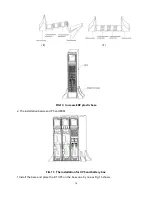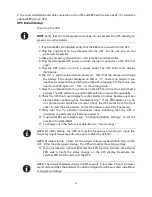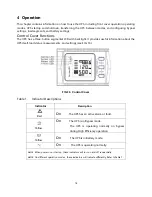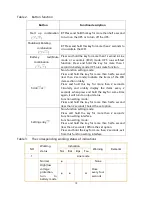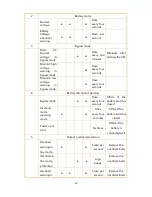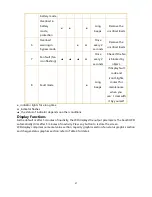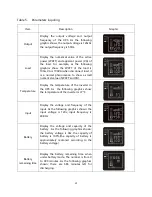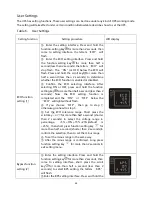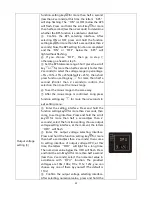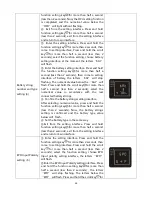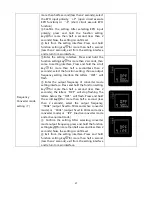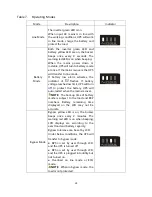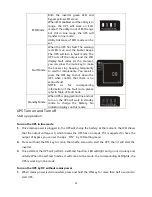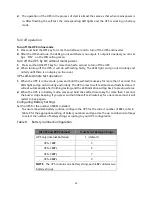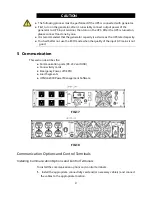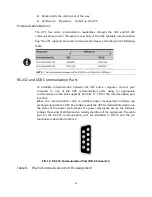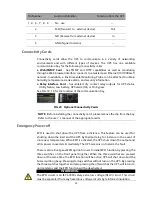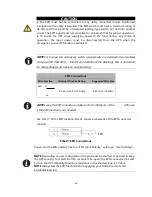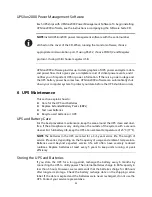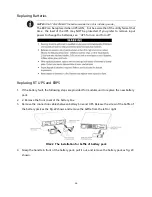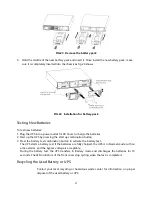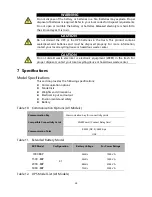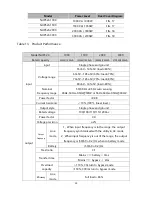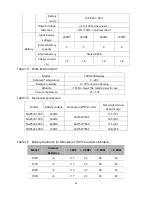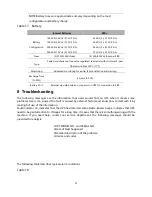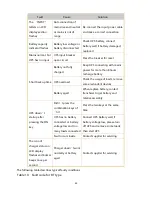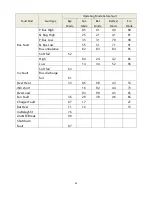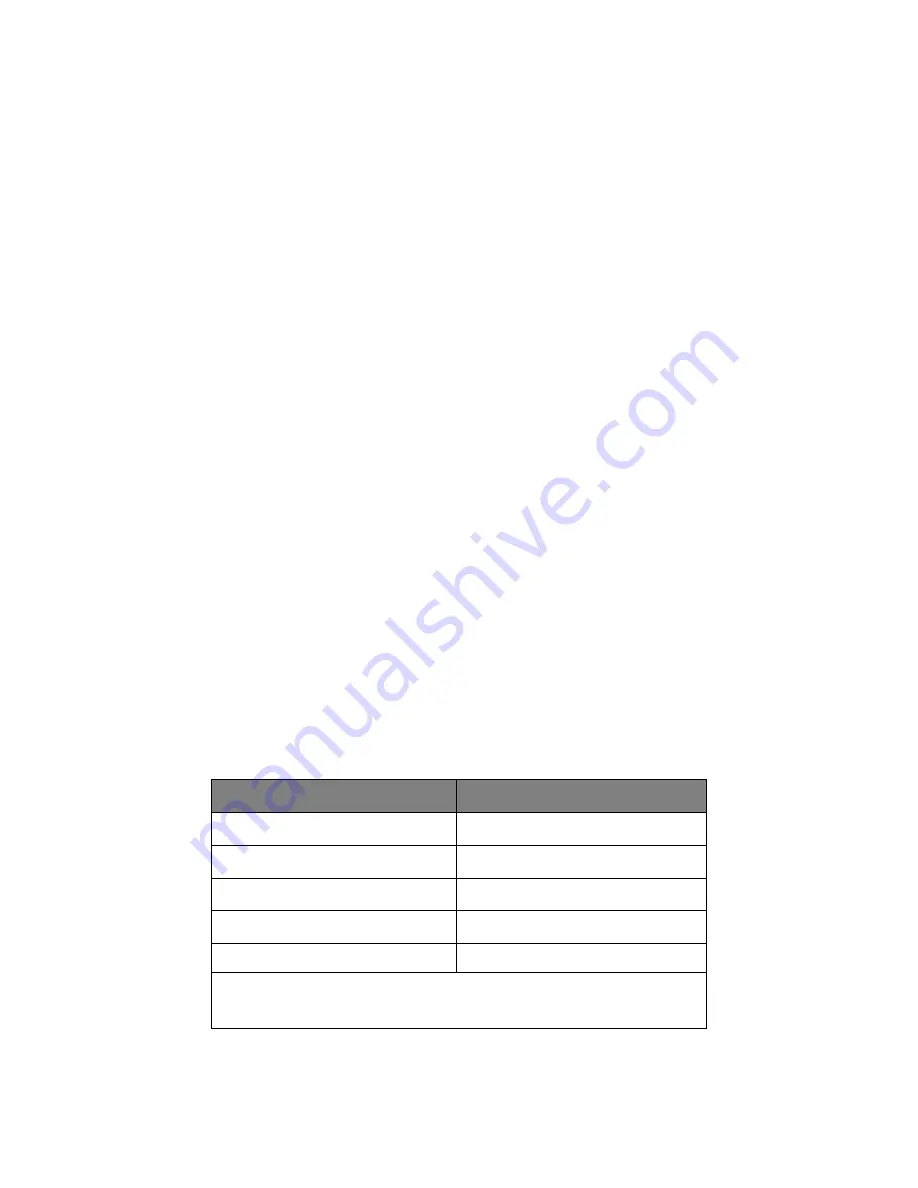
30
2. The operation of the UPS in the process of start is almost the same as that when mains power is
in. After finishing the self-test, the corresponding LED lights and the UPS is working in battery
mode.
Turn off operation
Turn off the UPS in line mode
1. Press and hold the OFF key for more than half a second to turn off the UPS and inverter.
2. After the UPS shutdown, the LEDs go out and there is no output. If output is needed, you can set
bps “ON” on the LCD setting menu.
Turn off the UPS by DC without mains power
1. Press and hold the OFF key for more than half a second to turn off the UPS.
2. When turning off the UPS, it will do self-testing firstly. The LEDs light and go out circularly and
orderly until there is no display on the cover.
UPS self-test/mute test operation.
1. When the UPS is in line mode, press and hold the self-test/mute key for more than 1 second, the
LEDs light and go out circularly and orderly. The UPS comes to self-test mode and tests its status. It
will exit automatically after finishing testing, and the LED indication will go back to previous status.
2. When the UPS is in battery mode, press and hold the self-test/mute key for more than 1 second,
the buzzer stops beeping. If you press and hold the self-test/mute key for one more second, it will
restart to beep again.
Configuring Battery Settings
Set the UPS for the number of EBPs installed.
To ensure maximum battery runtime, configure the UPS for the correct number of EBPs, refer to
Table 8 for the appropriate setting of battery numbers and type. Use the up and down scroll keys
to select the number of battery strings according to your UPS configuration:
Table 8.
Battery number Configuration
All UPS and EBP Cabinets
Number of Battery Strings
UPS only (internal batteries)
1(default)
UPS+1EBP
3
UPS+2EBPs
5
UPS+3EBPs
7
UPS+4EBPs
9
NOTE The UPS contains one battery string; each EBP contains two
battery strings.

